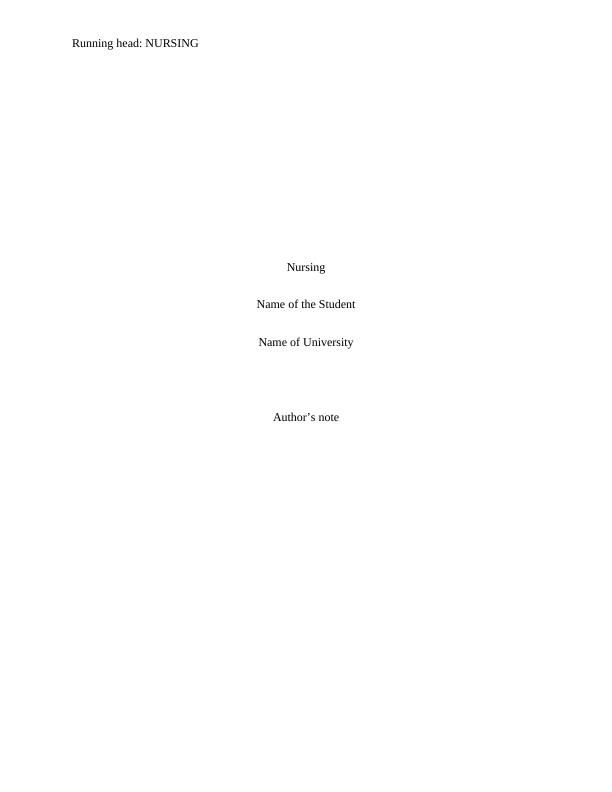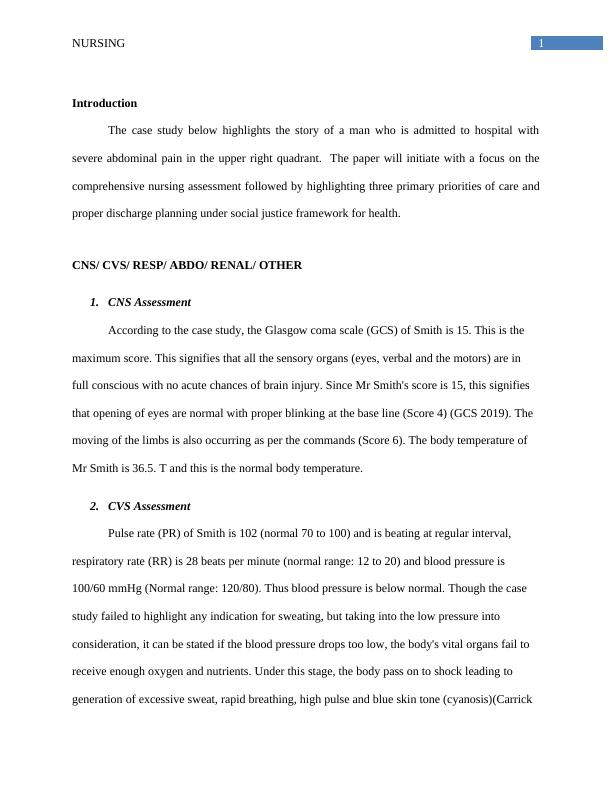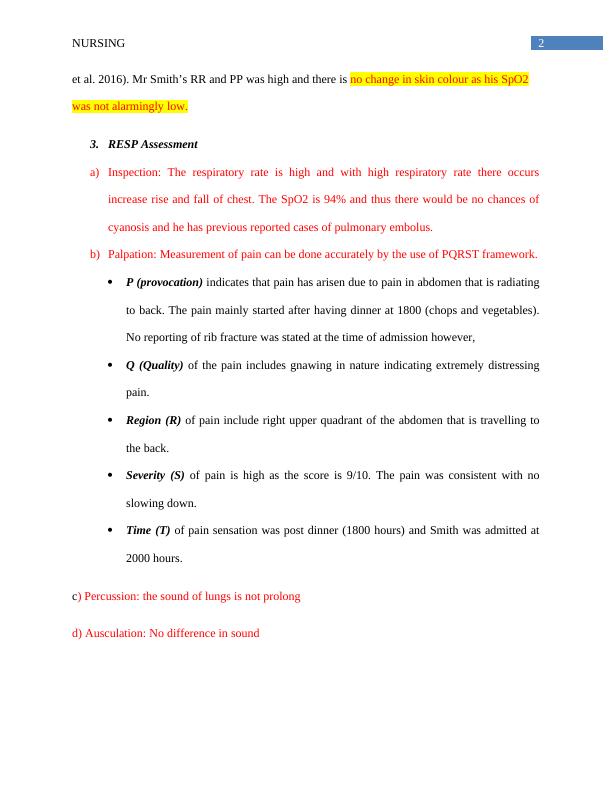Comprehensive Nursing Assessment and Priorities of Care
12 Pages2909 Words1 Views
Added on 2022-12-29
About This Document
This case study highlights the comprehensive nursing assessment and three primary priorities of care for a patient with severe abdominal pain. It also discusses proper discharge planning under a social justice framework for health.
Comprehensive Nursing Assessment and Priorities of Care
Added on 2022-12-29
ShareRelated Documents
End of preview
Want to access all the pages? Upload your documents or become a member.
Nursing Assessment and Priorities of Care for Pancreatitis Patient
|8
|2963
|472
Nursing: Assessment, Pathophysiology, and Interventions
|9
|2232
|38
NUR 241 Student Worksheet - Case Study on Heart Failure
|7
|1422
|58
Nursing Case Study Analysis | Report
|11
|2938
|32
Nur331 Complex Care - Assessment Task 1B Case Study
|9
|2711
|111
Assignment on Rheumatic Heart Disease
|3
|409
|16




